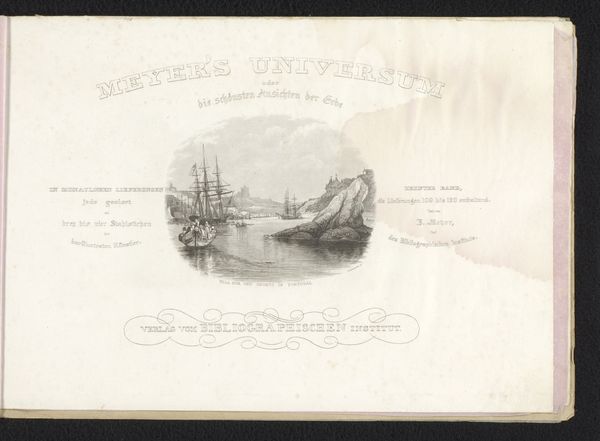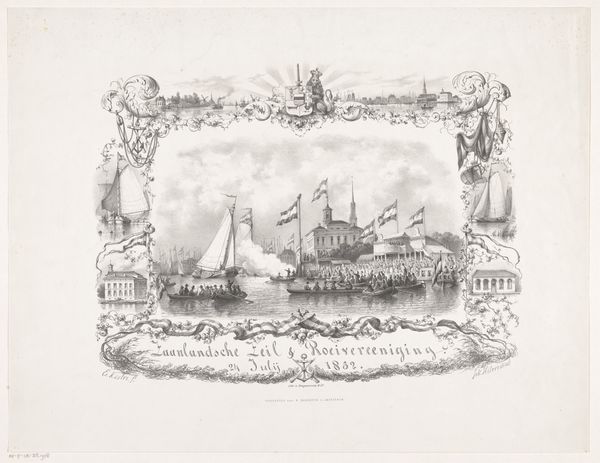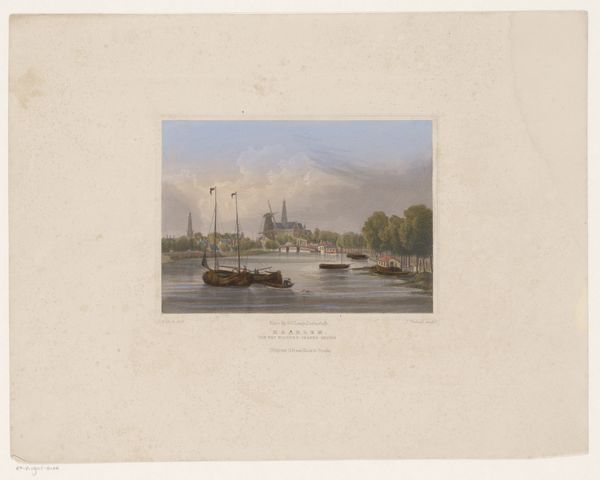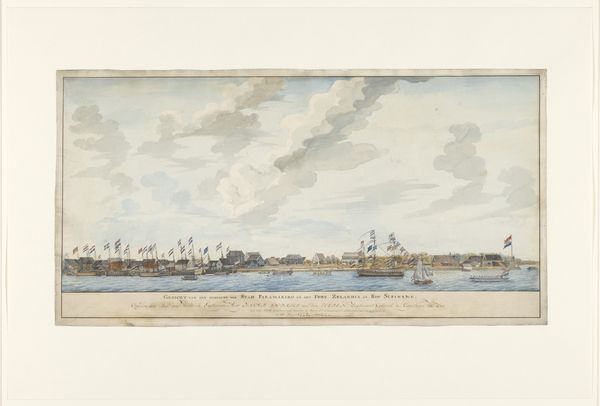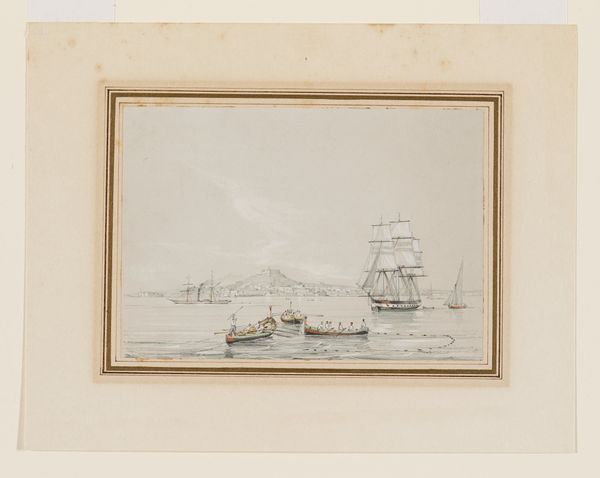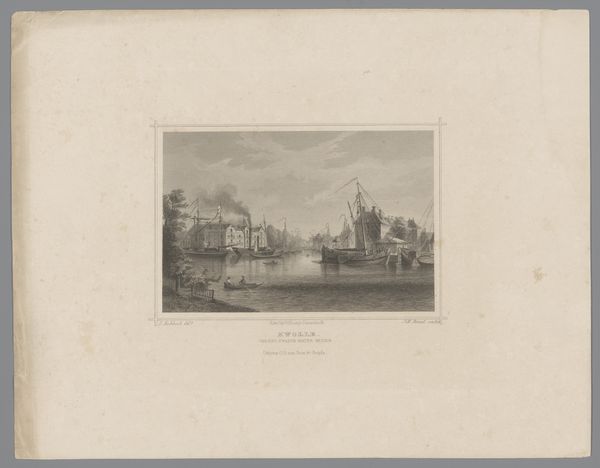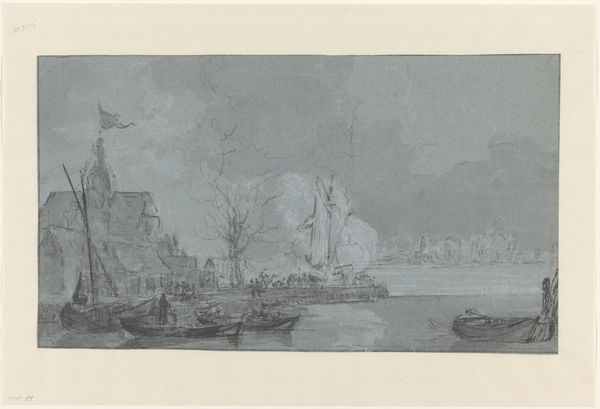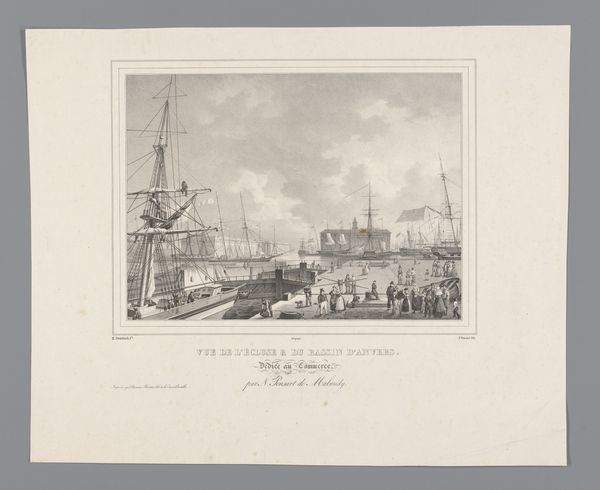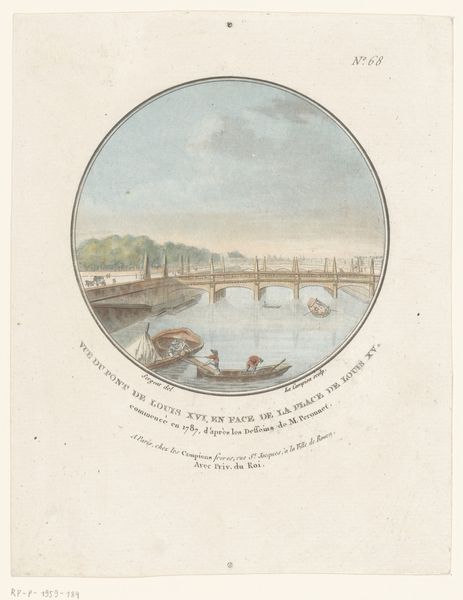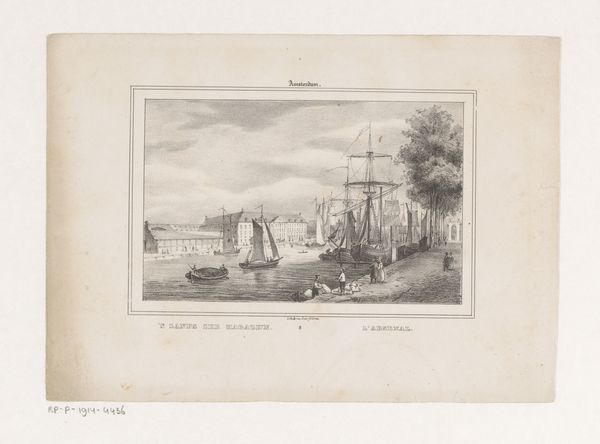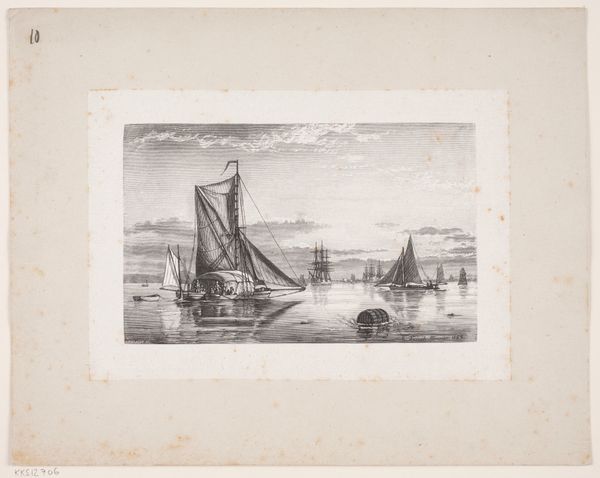
drawing, print, paper, watercolor
#
tree
#
drawing
#
boat
# print
#
landscape
#
flower
#
paper
#
watercolor
#
coloured pencil
#
romanticism
#
cityscape
#
decorative-art
#
building
Dimensions: Sheet: 9 3/8 × 7 1/2 in. (23.8 × 19 cm)
Copyright: Public Domain
Curator: Take a look at this valentine. The "Double cobweb valentine with Venetian scene" dates to sometime between 1830 and 1850. It resides here at The Met. Editor: It has such a delicate, romantic feel! The faded watercolor evokes a dreamlike nostalgia, doesn't it? The lace trim gives a clue about the cultural conventions of the decorative arts at the time. Curator: Exactly! And that lace isn't just decoration, is it? Think of the labor involved, the highly skilled lacemakers. These were often women, whose work, sadly, went largely uncredited. The valentine form itself—who was producing these, and how did its consumption shape social rituals? Editor: Good points. The visual layout contributes to the piece's sentimentality, though. Note how the landscape elements guide your eye through the artwork. We've got the buildings, the canal, little boats…It creates a tiny picturesque journey. And those concentric circle emanating outwards: is it suggesting the rippling outwards of feeling? Curator: The print and watercolor medium adds an interesting dimension. Prints, initially a more accessible medium, were frequently hand-colored. Who added the colours here, I wonder? The mechanization of printmaking intersects with handcraft traditions within a very specific socioeconomic structure. Editor: Perhaps, but from a visual point of view, the artist masterfully contrasted those sharp, angular buildings with the fluid lines of water and flora. Curator: Consider, though, the relationship between commerce and emotion. These weren’t simply heartfelt tokens. They were commodities produced and sold within a developing market for sentimental goods. How does the commodification affect the “authenticity” of affection here? Editor: Well, the anonymous profile of the creator perhaps indicates this artist isn't trying to compete in "high art." The combination of that precise scene surrounded by such decorative romantic features… it does create an interesting emotional dynamic. I confess I still like it despite any tension. Curator: Ultimately, its form and composition, no matter how romanticized, can be understood as part of a social fabric, reflective of labour practices and cultural expectations. Editor: And seen purely aesthetically, it provides an interesting moment frozen in decorative time.
Comments
No comments
Be the first to comment and join the conversation on the ultimate creative platform.
